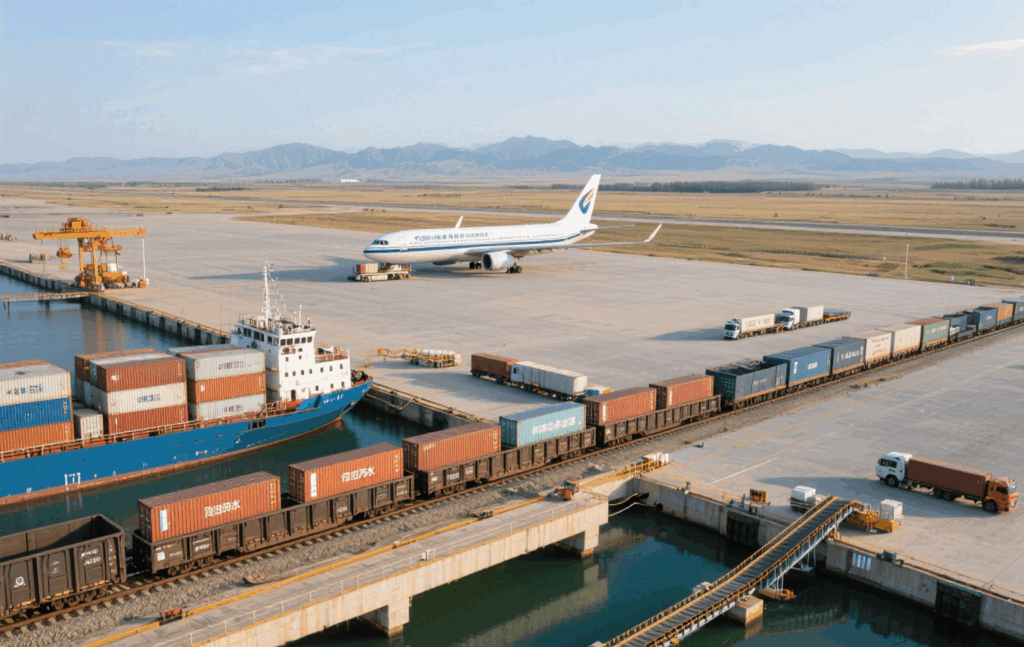Shipping costs are often the deciding factor for international buyers, e-commerce sellers, and importers. Finding the cheapest way to ship from China can make your business more competitive and your purchases more affordable. This guide explains the main shipping methods, compares costs and timelines, and provides real examples so you can choose the best option.
1.What is the Cheapest Way to Ship from China?
The cheapest method depends on shipment size and destination:
- Sea freight: Most affordable for large and heavy goods.
- Air freight: Best for urgent or high-value shipments.
- Courier: Ideal for small packages and door-to-door service.
- Rail freight: A balance between sea and air, but only available for China–Europe trade routes.
2.Why Focus on the Cheapest Way?
- Businesses reduce operating costs and boost profits.
- Individuals save money on personal imports and shopping.
- E-commerce sellers deliver faster at competitive shipping rates.
3.Shipping Methods Compared
| Shipping Method | Average Cost | Transit Time | Best For |
|---|---|---|---|
| Sea Freight | $250–$600 per 20ft container | 15–35 days | Bulk shipments, heavy goods |
| Air Freight | $4–$8 per kg | 3–7 days | Urgent, valuable, or lighter cargo |
| Courier | $15–$40 per parcel | 3–10 days | Small parcels, e-commerce orders |
| Rail Freight | $5,000–$7,000 per 40ft container | 15–20 days | Only for China–Europe shipments |

4.Rail Freight (China–Europe Only)
The China–Europe Railway Express connects major Chinese cities (Chongqing, Xi’an, Wuhan) with European hubs (Hamburg, Duisburg, Warsaw).
- Pros: Faster than sea, cheaper than air, eco-friendly.
- Cons: Only for Europe, limited routes, and capacity.
- Best Use: Electronics, auto parts, textiles shipped to Europe.
5.Related Terms
- FOB (Free on Board): Seller covers costs until goods are loaded on the ship.
- CIF (Cost, Insurance, Freight): Includes product cost, insurance, and shipping.
- DDP (Delivered Duty Paid): Forwarder pays duties, taxes, and clears customs.
- FCL vs LCL: Full container vs shared container shipping.
To learn more about shipping prices and inquire about the most favorable and timely transportation for your goods, contact topchinafreight now.
6.How to Avoid Problems
- Verify all documents (invoice, packing list, bill of lading).
- Check import restrictions for your country.
- Use reputable freight forwarders with strong China experience.
- Plan ahead during peak seasons like Chinese New Year.
7.How to Avoid Problems
- Consolidate shipments to save per-unit cost.
- Upgrade from LCL to FCL if volume is high.
- Negotiate with carriers for repeat shipments.
- Ship off-peak to avoid surcharges.
📌Example: A 20ft container from Shenzhen to Los Angeles cost $380 in March, but rose to $540 in December due to holiday peak season.
8.Real-World Examples
Case Study 1: Furniture to USA
- Cargo: 10 tons of wooden furniture
- Method: Sea Freight (FCL, 20ft container)
- Route: Shenzhen → Los Angeles
- Cost: $520
- Transit Time: 28 days
✅ Saved 40% compared to air freight.
Case Study 2: Electronics to Germany
- Cargo: 500kg consumer electronics
- Method: Rail Freight (Chengdu → Hamburg)
- Cost: $6,000 (40ft container shared, LCL rate)
- Transit Time: 18 days
✅ Balanced speed and cost, cheaper than air, faster than sea.
9.Conclusion
The cheapest way to ship from China depends on cargo size and destination. Sea freight is the most economical for large volumes, air freight is best for urgent cargo, courier services suit small packages, and rail freight is a good middle option for Europe only. By consolidating shipments, negotiating rates, and avoiding peak seasons, you can significantly cut shipping costs while ensuring reliable delivery.
Request a Quote
Need a tailored solution for your shipping from China?
Let TJ China Freight Forwarder assist you with reliable, cost-effective service.
FAQ:
Q1.How customs duties affect the final shipping cost
Duties and VAT can add 10–30% depending on the destination country.
Q2.What documents are always needed for importing from China
Bill of lading, commercial invoice, packing list, and sometimes certificate of origin.
Q3.Which Incoterms are most cost-efficient for small buyers
FOB offers flexibility, DDP simplifies the process for importers.
Q4.How freight insurance protects shipments
Covers loss or damage in transit, recommended for high-value goods.
Q5.What role freight forwarders play in saving costs
They consolidate shipments, negotiate bulk rates, and handle customs.
